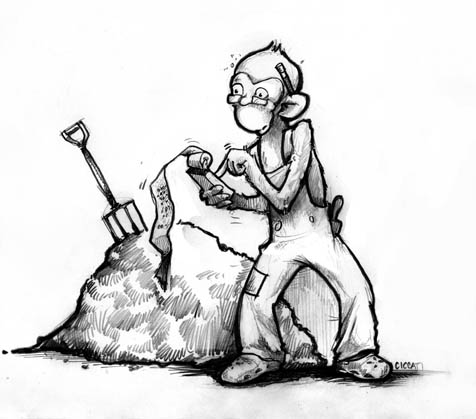Calculating Soil Volumes
Garden Math

If you want to apply one inch of commercial compost as a top dressing on a plot of soil that is 10 feet wide and 25 feet long and the compost is sold by the cubic yard, how much do you need to order? Does that sort of problem remind you of school, make your head hurt? Basic math skills can help make some of your gardening chores easier, and save money and even labor in the long run. So let’s review that one useful formula that can help you avoid unnecessary head-scratching at the home improvement center.
Figuring volumes is fairly easy if you remember that you simply multiply three dimensions by one another. What you also have to remember, though, is that the measurements must be in the same units. So, in our hypothetical problem, we need to convert inches to feet to yards. Let’s start with the area we have, though. Ten feet by 25 feet yields 250 square feet of soil that needs covering. Multiply that by one-twelfth of a foot (one inch), and you get 20.83 cubic feet of amendment needed. Since one cubic yard is 27 cubic feet (3 feet by 3 feet by 3 feet), you need to order one yard and find a use for the little bit that is left over.
Another use for this formula is in estimating how much potting mix you will need to fill a particular container. Here, we also need to remember how to figure the square footage of a circular pot. Measure the depth and multiply it by the diameter (you can average this if the pot is narrower at the bottom than the top) and the magic number, pi. Pi to three decimal places is 3.142, but 3 will work for a seat-of-the-pants calculation. Therefore, a half-barrel that is 20 inches deep and has a diameter of 30 inches will hold roughly 1,800 cubic inches. A cubic foot is 1,728 cubic inches (12 by 12 by 12), so you need just over a cubic foot of mix.
Carrying a calculator and this math refresher with you to the store will make your shopping a breeze.
November Tips
• Watch for cabbage moths and their hungry larvae. Either cover new cabbage and related broccoli, cauliflower, and kale with floating row covers to prevent the moths from laying eggs, or spray plants with Bt (Bacillus thuringiensis), a natural bacterial enemy of the caterpillars.
• Get your pruning shears, loppers, and saws in shape for the upcoming winter pruning season. Sharpen blades and tighten screws. Sharp blades make clean cuts with less potential damage to plants.
• Comb out dead leaves of evergreen grasses such as deer grass (Muhlenbergia rigens) and cut others like Miscanthus and Pennisetum to the ground when flower heads are done.



